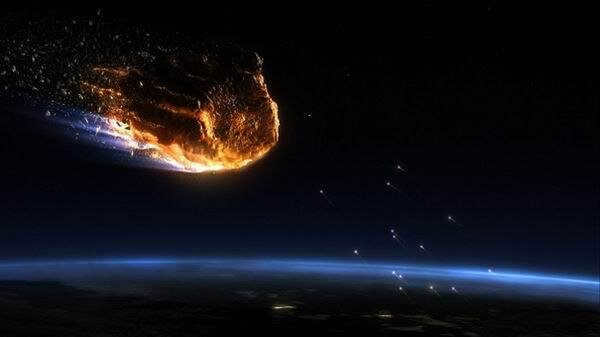An asteroid is a small celestial body in the Solar System with a diameter larger than 30 meters. The term was created by Frederick William Herschel (1738 – 1822), an English astronomer. The word “asteroid” comes from the ancient Greek word “asteriskos,” which means “similar to a star.” This name was given to these astronomical objects because they appeared to twinkle like stars when observed through a telescope.
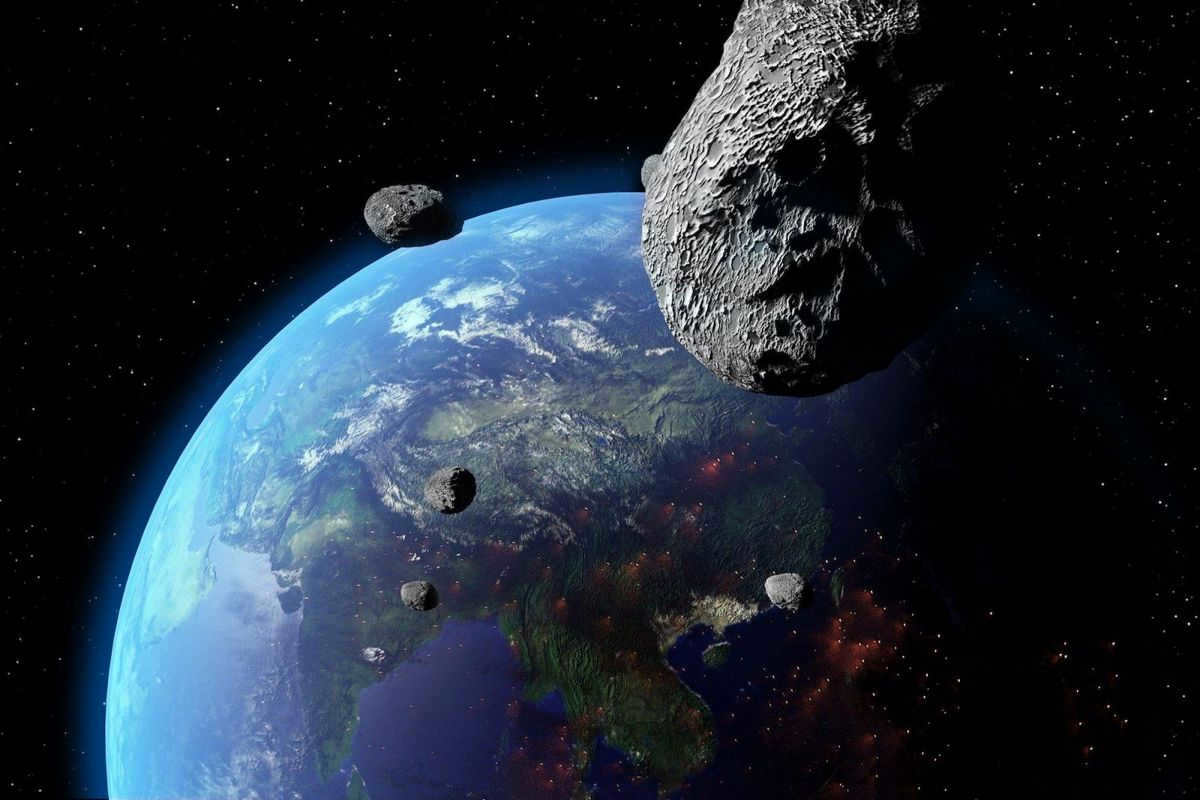
Exploring the Origins of Asteroids
The initial asteroid found in the realm of space exploration was identified by the notable Italian mathematician and astronomer, Giuseppe Piazzi (1746 – 1826), in 1801 at the Palermo Observatory. Initially, this newly unveiled celestial entity was misinterpreted as a petite planet. Following this breakthrough, subsequent space objects discovered within a span of six years were bestowed with unique appellations:
For three decades following their revelation, scientists struggled to locate a singular asteroid. It wasn’t until 1845 when the fifth minor planet, Astrea, was discovered. This landmark discovery paved the way for astronomers to make similar breakthroughs on an annual basis.
In the 21st century, there have been a total of 385,000 officially registered asteroids, out of which 18,000 have been given individual names. On August 24, 2006, Ceres, which was the first asteroid ever discovered by mankind, was classified as a dwarf planet.
Formation Classification
The organization and categorization of asteroids is done based on their orbital trajectories and the parameters of the sunlight reflected from their surfaces.
Orbital Paths
Based on the concept of characteristic paths in space, asteroids can be classified into:
- clusters – relatively loose formations that are named after the first celestial body discovered in their orbit;
- clans – condensed groups of small celestial bodies formed through the collision of larger space objects.
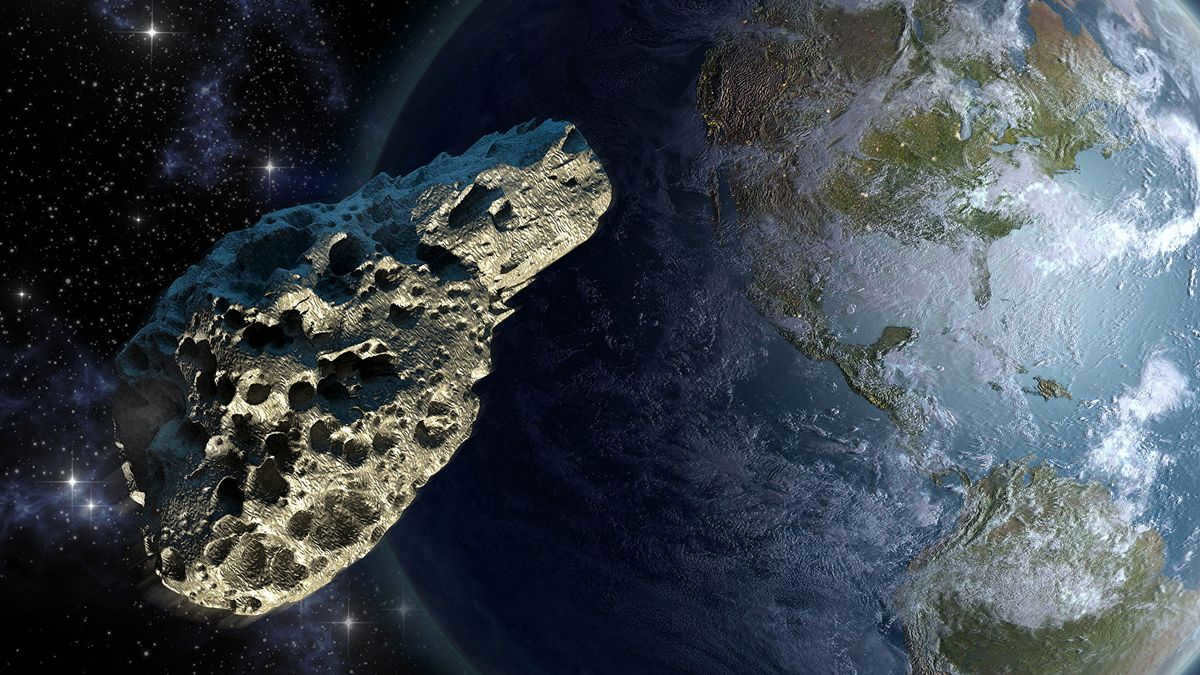
Asteroid Classification
There are 3 main groups of asteroids classified by their chemical composition and mass. These groups are further divided into spectral classes:
- The most abundant type is Class C asteroids, making up about 75% of all observed objects in the Solar System. They are characterized by a high carbon content and have a dark appearance, with an albedo ranging from 0.03 to 0.1 microns. Some notable examples of Class C asteroids include Hygeia, Aurora, and Europa.
- Class S – This category encompasses 17% of the analyzed celestial bodies, which possess a silicon composition and are characterized by an elevated concentration of silicates. These objects exhibit a moderate luminosity and an albedo ranging from 0.1 to 0.22 microns. Included in this group are Pallada, Juno, Irida, and Herculina.
- Class M – A relatively small and insufficiently examined group of celestial bodies, primarily composed of metals with a mixture of rock. They possess a moderate albedo within the range of 0.1 to 0.2 microns. Notable asteroids belonging to this class include Psyche, Lutetia, and Calliope.
As scientists utilized modern reflector telescopes to conduct more thorough investigations of planet-like bodies, the aforementioned list expanded. Today, in addition to the aforementioned classifications, the following types of objects have been identified:
The count of identified asteroids does not always align with any specific category, as some celestial objects defy classification due to their intricate structure and insufficiently explored chemical composition.
This categorization is not deemed definitive, and as scientists gather new information, the range of categories may expand.
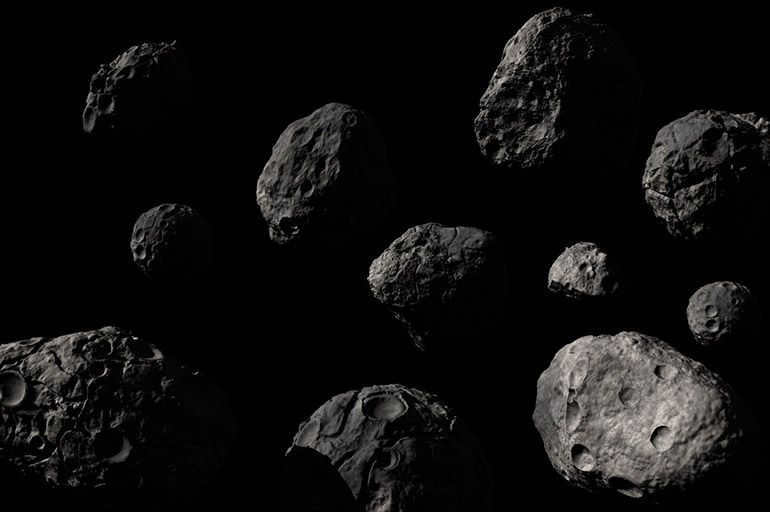
Arranging by magnitude
Experts propose that there exist over one million celestial bodies resembling planets in the solar system that possess a dimension larger than one kilometer in diameter. Voluminous asteroids with an indicator of 100 kilometers amount to roughly 240. The estimated proportion between the diameter of the heavenly entity and the quantity of observable objects is presented in the following chart:
Physical attributes and composition
Asteroids are characterized by their irregular shape, which causes them to exhibit periodic changes in brightness. This is because the amount of reflected light depends on the asteroid’s position relative to the Earth and the Sun. These celestial bodies are small and do not have an atmosphere. However, some asteroids have their own satellites, such as Calliope and its companion Linus, or Ida with its satellite Dactylus. The total mass of all the objects in the main asteroid belt ranges from 3.0 to 3.6 x 10^21 kg, which is approximately 4% of the Moon’s satellite mass.
The surface temperature of asteroids is influenced by their albedo (reflectivity) and distance from the Sun. However, due to their rotation, there is a significant difference in temperature between the day and night sides of these celestial bodies.
The majority of the objects that have been studied in the Asteroid Belt can be categorized into three groups based on their chemical composition: the dark carbonaceous class (C-class), the light silicate class (S-class), and the bright metallic class (M-class). Information regarding the sizes of these celestial bodies is obtained from the Infrared Orbiting Observatory (IRAS).
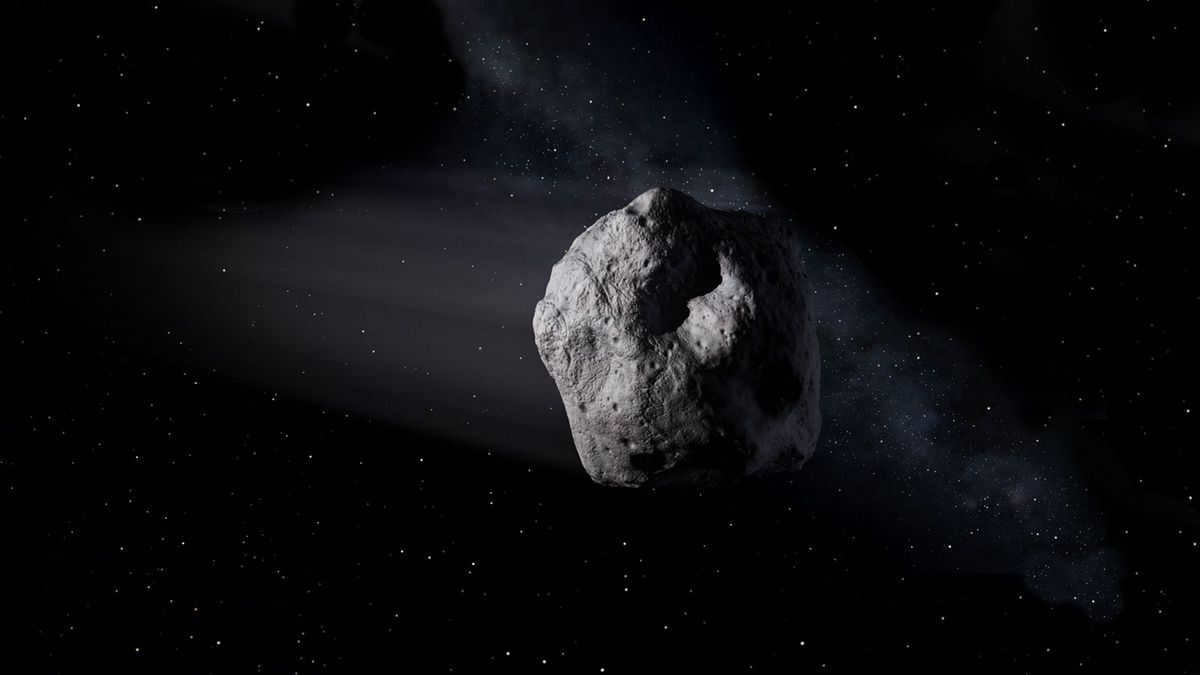
Formation and Evolution of Asteroids
An asteroid is a celestial object that traverses the vastness of space. These objects have their geological origins rooted in the early stages of the formation of our solar system. The powerful gravitational forces exerted by dense gas, cosmic particles, and stardust swirling around the Sun led to the creation of these small, plate-like bodies.
The mutual attraction of gravity caused numerous asteroids to accumulate significant mass. Some of these asteroids have now become irregularly-shaped blocks, ranging in size from 100 meters to several hundred kilometers. Only the largest objects have achieved a spherical shape, resembling a ball.
Investigating the Origins
The period of asteroid formation in our solar system is believed to coincide with the time when Jupiter was undergoing a significant increase in mass, transforming into a colossal planet. As a result, certain protoplanets fragmented and deviated from their original orbits.
Exploring Formations
A majority of the celestial bodies that are currently being studied are concentrated within the primary Asteroid Belt of our Solar System, situated between the orbital paths of Mars and Jupiter. Additionally, there are two smaller clusters of asteroids, known as Trojans, which orbit the Sun along the same trajectory as Jupiter. Some individual celestial objects have orbits that extend beyond the Belt, and occasionally these objects come into close proximity with Earth.
The exploration of asteroids contributes to scientists’ understanding of the enigma surrounding the origin of life on Earth. As per one theory, the collision between Earth and celestial bodies traveling through space brought water and the first microorganisms to our planet.
In the present day, scientists in developed nations are investigating the potential utilization of certain objects orbiting the primary asteroid belt in the solar system for industrial purposes. It is postulated that, in the future, comet blocks will serve as sources of raw materials for the extraction of valuable metals and hydrogen. Researchers have estimated that a single M-class asteroid measuring up to 1 km in diameter contains more iron ore than what is currently harvested on Earth within a single calendar year.
Engaging Trivia
Did you know that astronomical bodies exceeding 10 kilometers in diameter can pose a grave threat to humanity? Even though the Earth itself is larger than all the asteroids we have discovered so far, a collision with an object just slightly more than 3 kilometers wide could potentially lead to the annihilation of our civilization.
As of today, the orbital paths of the studied space objects of this magnitude do not intersect with Earth’s trajectory. However, it is worth noting that there are nearly 700 celestial bodies passing relatively close to our planet’s orbit.
Mark your calendars, because June 30th is celebrated worldwide as Asteroid Day.
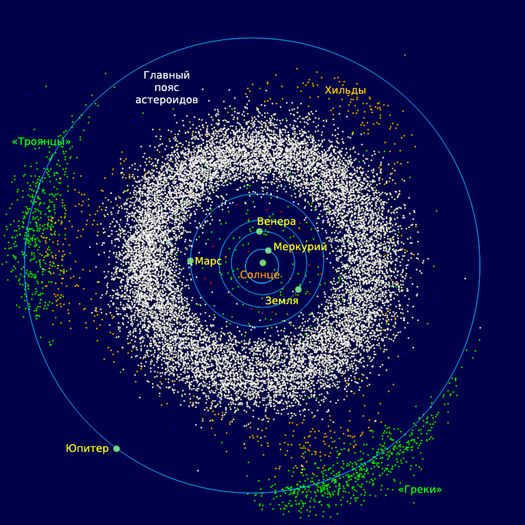
An asteroid is a celestial body that orbits the Sun and is smaller in size compared to true planets. It is also known as a small planet or a planetoid. Asteroids are typically irregularly shaped and do not have an atmosphere. Although rare, some asteroids may have satellites [2].
Definition
The word “asteroid”, derived from the Greek words ἀστήρ (astēr) meaning “star” and εἶδος (eidos) meaning “shape” or “form”, was initially coined by William Herschel in 1802 after the discovery of the second asteroid, 2 Pallada, by Heinrich Wilhelm Olbers. Unlike planets, which appear as visible discs, asteroids are small celestial objects that resemble stars. It is worth mentioning that Herschel also used the term to describe small moons orbiting gas giants. The first scientific publication to feature the term “asteroid” in its title was written by Georg Adolf Ehrmann in 1840.
The precise definition of an asteroid has not yet been fully established. One potential way to categorize asteroids is based on their size. According to this classification, asteroids are celestial bodies with a diameter exceeding 50 meters, as opposed to meteorites. Unlike meteorites, asteroids can make their way to the Earth’s surface with minimal hindrance, as they do not sublimate or explode upon entering the Earth’s atmosphere. Additionally, asteroids are primarily composed of rocks and metals, in contrast to comets which are predominantly made up of volatile elements. Occasionally, the term “artificial asteroid” is used to refer to man-made objects in solar orbit, like the Mariner 4 spacecraft [3].
In the solar system, there are hundreds of thousands of asteroids. As of September 11, 2017, the International Astronomical Union database recorded 739,062 objects, with 496,915 having accurately determined orbits and assigned official numbers. Additionally, more than 19,000 asteroids have officially approved names.
The majority of these asteroids are found in the asteroid belt, which is located between Mars and Jupiter. They have orbits with relatively low eccentricity. It is estimated that there are between 1.1 and 1.9 million asteroids in the belt with diameters greater than 1 km, along with millions of smaller ones. Modern estimates suggest that the total number of asteroids in the solar system is in the tens of millions.
The largest asteroid in the asteroid belt is Ceres, which has a diameter of 932 km. Pallada and Vesta, two other asteroids in the belt, have diameters of about 500 km each. Vesta is the only asteroid in the belt that can be seen with the naked eye. Occasionally, asteroids that cross Earth’s orbit can also be seen without the aid of a telescope, like the asteroid Apophis (99942). The total mass of the asteroids in the belt is estimated to be between 3.0-3.6 × 1021 kg, which is about 4% of the mass of the Moon. Based on this mass, Ceres weighs approximately 0.95 × 1021 kg, accounting for about 32% of the total weight of all the asteroids in the belt. If we include the next three most massive asteroids, Vesta (9%), Pallas (7%), and Hygiea (3%), these four objects make up 51% of the entire asteroid belt. Therefore, the majority of asteroids in the belt have a negligible mass in astronomical terms.
Other classes of asteroids have been identified beyond the asteroid belt. Near-Earth asteroids possess orbits in close proximity to our planet. Trojan asteroids are gravitationally locked to Jupiter, moving in tandem with the planet’s orbit. Some Trojan asteroids have also been discovered in orbits around Mars and Neptune, as well as one each around Earth and Uranus. There is a theoretical group of asteroids known as Vulcanoids that are believed to circle the Sun within the orbit of Mercury.
| 100 meters | 300 meters | 500 meters | 1 kilometer | 3 kilometers | 5 kilometers | 10 kilometers | 30 kilometers | 50 kilometers | 100 kilometers | 200 kilometers | 300 kilometers | 500 kilometers | 900 kilometers |
| 25,000,000 | 4,000,000 | 2,000,000 | 750,000 | 200,000 | 90,000 | 10,000 | 1100 | 600 | 200 | 30 | 5 | 3 | 1 |
Classification
Asteroids are categorized into groups and families based on the characteristics of their orbits. Typically, an asteroid group is named after the first asteroid discovered within that group. Groups generally consist of loosely related objects, while families are more closely related as they are formed from the fragmentation of a larger asteroid. The Atira family group consists of near-Earth asteroids that have orbits entirely within Earth’s orbit.
In 1975, astronomers developed a taxonomic system for asteroids based on their color, albedo, and spectral lines. This system reflects the surface composition of the asteroids and initially divided them into three categories:
- Class C asteroids – predominantly carbonaceous, accounting for 75% of all known asteroids
- Class S asteroids – primarily composed of silicate materials, accounting for approximately 17% of all known asteroids.
- M class asteroids – predominantly made up of metallic materials, constituting the majority of the remaining asteroids.
Over time, this classification system has evolved to include numerous subcategories. The number of these subcategories continues to increase as scientists conduct more in-depth studies on asteroids [7].
The exploration of the initial asteroids initiated in the final two decades of the 18th century. Following the revelation in 1781 of the planet Uranus, whose distance was foreseen by the Titius-Bode principle, numerous astronomers directed their attention towards locating a theoretical planet situated between the orbits of Mars and Jupiter, which was deemed the appropriate position to investigate a heavenly body based on the Titius-Bode principle. In 1789, a collective of 24 astronomers, headed by Franz Xaver, commenced the pursuit.
The task of locating objects at such a distance from the Sun necessitates the manual compilation of detailed star charts for all objects of a certain minimum brightness situated in the zodiacal plane. Moving objects in the sky were subsequently observed on consecutive nights. The projected angular motion of the missing planet amounts to approximately 30 angular seconds per hour, which is easily discernible to the observer. Interestingly, the initial asteroid (1) Ceres was not discovered by a member of the group, but rather by accident. In 1801, Giuseppe Piazzi, the director of the Palermo Observatory at the time, stumbled upon a new star-like object (devoid of a visible disk) in the Taurus constellation while tracking the object’s motion over the following nights. His colleague Carl Friedrich Gauss utilized these observations and calculated the precise distance from the unidentified object to the Sun. Gauss determined that the object resided between the orbits of Mars and Jupiter. Piazzi named the object Ceres in tribute to the Greek goddess of agriculture. Three additional asteroids – (2) Pallada, (3) Juno, and (4) Vesta – were discovered in the subsequent years. After an additional eight years of unsuccessful search, most astronomers ceased their observations, concluding that they had identified all conceivable bodies[1].
However, in 1830 Carl Ludwig Henke resumed his search and, after fifteen years, he made a groundbreaking discovery: asteroid (5) Astrea. This was the first asteroid found in nearly four decades. Astonishingly, just under two years later, Henke also spotted asteroid (6) Geba. This monumental find convinced numerous astronomers to reignite their search for asteroids. Consequently, for a considerable period of time, astronomers were able to uncover an average of one new celestial object per year.
Fast forward to 1891, when Max Wolf became the pioneer of astrophotography in the quest for asteroids. This innovative technique involved capturing photographs with extended exposure times, resulting in short streaks of brightness left behind by asteroids. Remarkably, during his lifetime, Wolf managed to discover over 240 celestial objects [8].
Asteroid Classification
Once an asteroid’s path has been verified, it is assigned a numerical designation and may also receive a name, such as (1) Ceres. In the early days, asteroids were named after figures from Greek or Roman mythology,[1] but as those names became scarce, asteroids started being named after notable individuals, the spouses of discoverers, and even characters from television shows. The tradition of naming asteroids after women persisted until the naming of asteroid number 334, which was named after the city of Chicago. The standard convention for asteroid names requires that the numerical designation be enclosed in parentheses, e.g., (433) Eros. There are several groups of asteroids with similar names – for instance, the Centaurs, which orbit between Saturn and Neptune, are named after mythical centaurs. In contrast, the Trojan asteroids are named after heroes from the Trojan War[9].
Danger of asteroids to Earth
There has been an increasing focus on identifying asteroids that intersect with Earth’s orbit and pose a potential threat of collision in the future since the late 20th century. The main groups of near-Earth asteroids include the Cupids, Apollons, Atons, and Athyrs. Earth scientists have put forward various strategies to mitigate asteroid collisions, and ongoing scientific advancements are being made in this field.
The discovery of the near-Earth asteroid (433) Eros in 1898 and a series of similar asteroids in the 1930s, such as (1221) Cupid, (1862) Apollo, (2102) Adonis, and (69230) Hermes, heightened concerns. In 1937, Hermes came as close as 0.005 astronomical units to Earth, creating a theoretical possibility of a collision [10].
- ↑ 1,01,11,2ASTEROIDS – Large Russian Encyclopedia – electronic version(unpublished). old.bigenc.ru. Date of access: April 13, 2023.
- ↑Astronet > Do asteroids have satellites?(unpublished).. www.astronet.ru. Date of access: April 13, 2023.
- ↑R. I. A. News.Meteorite: how it differs from a meteor, bolide, comet and asteroid(Russian).. RIA Novosti (20130219T1742). Date of circulation: April 13, 2023.
- ↑IAU Minor Planet Center(unpublished). minorplanetcenter.net. Date of access: April 13, 2023.
- ↑Asteroid belt between Mars and Jupiter.(not available).. kosmoved.ru. Date of access: April 13, 2023.
- ↑G. A. Krasinsky, E. V. Pitjeva, M. V. Vasilyev, E. I. Yagudina.Undetected Mass in the Asteroid Belt(English) // Icarus. – 2002-07-01. – Vol. 158 , iss. 1 . – P. 98-105 . – ISSN0019-1035. – doi:10.1006/icar.2002.6837.
- ↑Asteroid(Russian)(unpublished).?. All About Space Magazine (January 27, 2016). Date of circulation: April 13, 2023.
- ↑History of asteroid studies(unpublished). . planetoved.ru. Date of address: April 13, 2023.
- ↑ About classification of asteroids – Zhivoy Kosmos(Russian)(not available).?. alivespace.ru (January 27, 2023). Circulation date: April 13, 2023.
- ↑Group of writers.Asteroid and comet peril: past, present, future. – Litres, 2022-05-15. – 770 pages. – ISBN 978-5-457-42424-1.
This piece of writing is considered “completed”. This does not determine the excellence of the article, but it already adequately addresses the primary subject. If you wish to enhance the article – feel free to edit it!
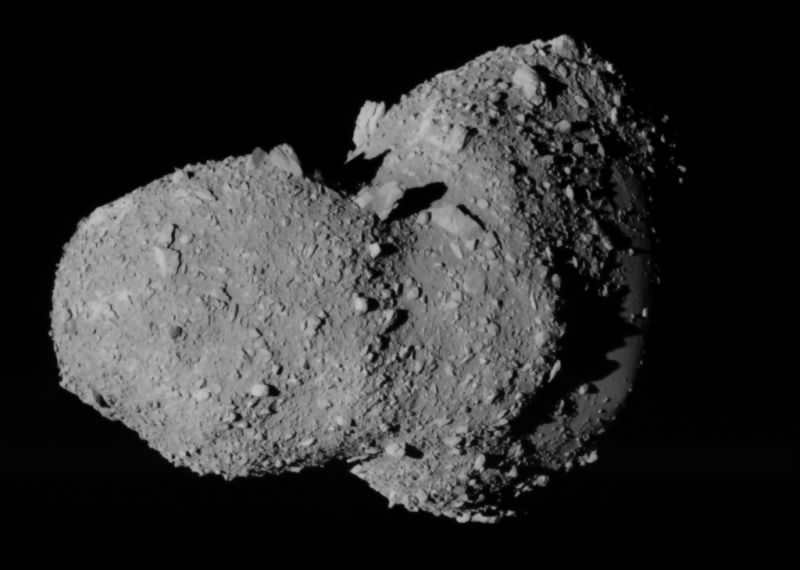
Everything you need to know about asteroids for kids: a detailed description and explanation accompanied by captivating images, fascinating trivia, insights into the nature of asteroids and meteorites, the asteroid belt, their occasional collisions with Earth, as well as different types and nomenclature.
For the youngest ones It is important to bear in mind that an asteroid is a small rocky object, lacking an atmosphere, orbiting around a star, and not large enough to be classified as a planet. Parents or educators in educational institutions can educate the children about the fact that the combined weight of asteroids is smaller than that of Earth. However, it should not be assumed that their size poses no danger. Many of these celestial bodies have collided with our planet in the past, and there is a possibility of it happening again. That is why researchers are continuously studying these entities, evaluating their composition and path. And if a hazardous space rock is hurtling towards us, it is better to be prepared.
The origin of asteroids – an explanation for kids
Let’s start by explaining to kids that asteroids are the remnants of the material left over from the formation of our solar system 4.6 billion years ago. When Jupiter formed, it created a gap between itself and Mars, preventing other planets from forming in that space. As a result, small objects collided in that area and became asteroids.
It’s important for children to grasp this concept, as scientists are constantly uncovering new information about the past. Two recent theories, known as the Nice model and the Grand Tack model, suggest that the gas giants in our solar system may have traveled through the system before settling into their current orbits. This movement could have disrupted the main asteroid belt, altering its original composition.
Explanation of the Physical Characteristics of Asteroids for Kids
Asteroids come in different sizes. Some can be as big as Ceres, which is 940 kilometers wide. On the other hand, the smallest asteroid we know of is called 2015 TC25, and it is only 2 meters in size. It came close to our planet in October 2015. However, children don’t need to worry because there is a very low chance that asteroids will come near us in the near future.
Most asteroids have irregular shapes, although the largest ones can be somewhat spherical. They often have hollows and craters on their surfaces. For example, Vesta has a massive crater that measures 460 kilometers in diameter. Additionally, most asteroids have a dusty surface.
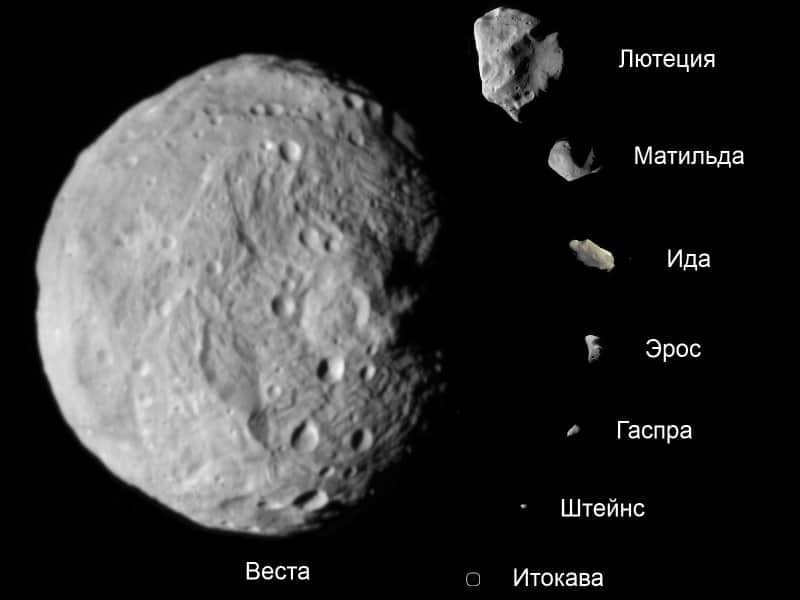
Comparison of the sizes of certain asteroids in the primary belt
Asteroids also orbit the star in an elliptical pattern, causing them to perform chaotic somersaults and turns along their trajectory. It is particularly fascinating for young individuals to learn that some asteroids have a small satellite or two moons. There exist binary or double asteroids, as well as triple asteroids, which are approximately the same in size. Asteroids can undergo evolution if they are captured by a planet’s gravitational pull. Subsequently, they accumulate mass, enter into orbit, and transform into satellites. Among the potential candidates are Phobos and Deimos (as well as many of the satellites around Jupiter, Uranus, Saturn, and Neptune.
Not only do they differ in size and shape, they can also take the form of either solid pieces or small fragments held together by the force of gravity. In the space between Uranus and Neptune, there exists an asteroid that possesses its very own ring system. Additionally, another asteroid is gifted with a remarkable six tails!
With an average temperature dipping as low as -73°C, these celestial bodies have remained virtually unchanged for billions of years. Therefore, it is of utmost importance to explore them in order to catch a glimpse into the ancient world of the solar system.
Explanation for Children: Asteroid Classification
Asteroids are objects that can be found in three different zones within our solar system. The majority of asteroids are located in the main belt, which is a giant ring-shaped area between the orbits of Mars and Jupiter. In this main belt, there are over 200 asteroids with a diameter of 100 km, and between 1.1-1.9 million asteroids with a diameter of 1 km.
It’s important for parents or teachers to explain to children that the main belt is not only home to asteroids, but also other celestial objects. In the past, Ceres was considered an asteroid, but it has since been reclassified as a dwarf planet. Additionally, scientists have recently discovered a new class of asteroids known as “asteroids of the main belt.” These asteroids are small rocky objects that can develop tails when they collide, break apart, or reveal a hidden comet.
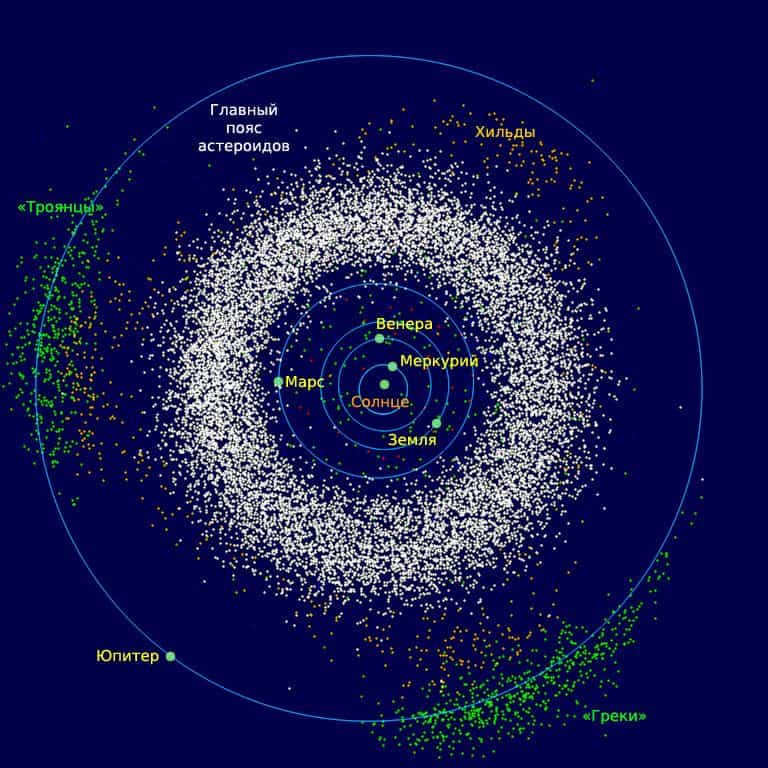
The Main Belt Asteroids and Trojans can be found in different locations.
There are a significant number of rocks located outside of the main belt. These rocks tend to gather near large planets in specific areas known as Lagrange points. At these points, the gravitational forces from the sun and the planet are balanced. Jupiter’s Trojans are the most numerous, with a population almost equal to that of the asteroid belt. Additionally, Neptune, Mars, and Earth also have Trojans present.
Near-Earth asteroids have an orbit that is closer to us than the Sun does. Cupids have a similar orbit to ours but they never cross paths with Earth. Apollons, on the other hand, intersect with our orbit but are usually located further away. Atoms also intersect our orbit but they are positioned within it. The closest objects to us are the atyrs. The European Space Agency has identified 10,000 near-Earth objects that are present in our vicinity.
Aside from being categorized by their orbit, asteroids can also be classified into three groups based on their composition. The first group is C-type (carbonaceous), which are gray in color and account for 75% of all known asteroids. These asteroids are believed to have formed from clay and stony silicate rocks and are typically found in the outer regions of the asteroid belt. The second group is S-type (silica), which are green and red in color and make up 17% of all asteroids. These asteroids are composed of silicate materials and nickel-iron and are mainly found in the inner regions of the asteroid belt. The last group is M-type (metallic), which are red in color and make up the remaining asteroids. These asteroids are primarily composed of nickel-iron. It is important for children to understand that there are also other types of asteroids based on their composition, such as V-type asteroids like Vesta, which have a basaltic volcanic crust.
Since the birth of our planet, which happened about 4.5 billion years ago, asteroid collisions with Earth have been a common occurrence. In order to inflict significant damage on our planet, an asteroid would need to have a diameter of at least ¼ mile. Such an impact would release a large amount of dust into the atmosphere, causing conditions similar to a “nuclear winter”. On average, a catastrophic asteroid collision takes place once every 1,000 years.
Smaller objects, on the other hand, fall to Earth at intervals ranging from 1,000 to 10,000 years. Although they may not cause widespread destruction, they still have the potential to obliterate an entire city or trigger a tsunami. If an asteroid is smaller than 25 meters in diameter, it is likely to burn up upon entering the Earth’s atmosphere.
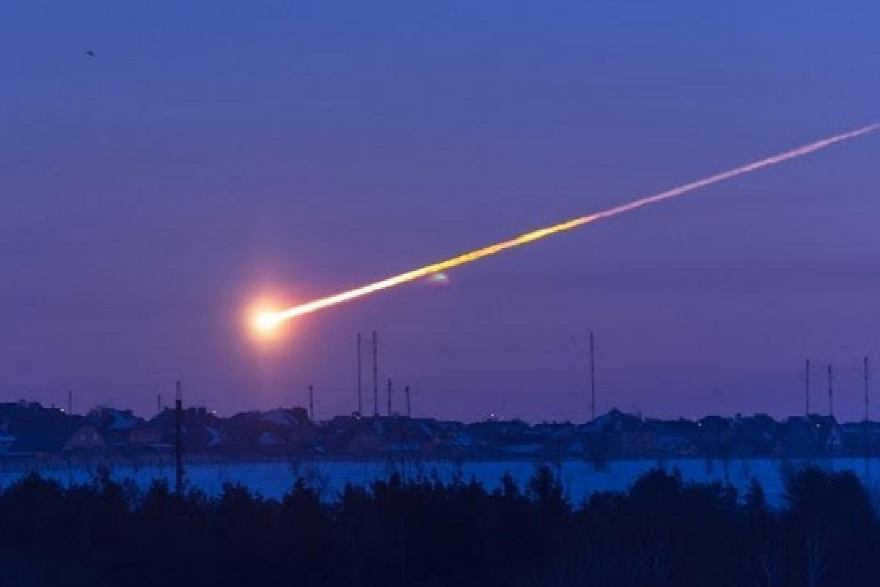

The most recent notable occurrence transpired on February 15, 2013, when an asteroid traversed the atmosphere directly above the Russian urban center known as Chelyabinsk. During this specific timeframe, a total of 1200 local inhabitants were affected as a direct result of the powerful shockwave generated by the asteroid’s entry.
There are numerous potentially hazardous objects traveling through outer space, and they are constantly under observation. Some come close in proximity, while others are contemplating such a possibility in the coming years. In order to have enough time to respond, there needs to be a window of opportunity spanning 30-40 years. Although there is now more discussion about technology to counteract these objects, there is still a risk of overlooking the threat and not having enough time to react.
It is important to convey to young individuals that there are advantages to a potential threat. After all, it was an asteroid impact that played a role in our existence. During the formation of the planet, it was arid and desolate. However, through the impact of comets and asteroids, water and other carbon-based compounds were left behind, enabling the formation of life. As the solar system took shape, these objects stabilized and allowed for the emergence of modern life forms.
If a celestial body known as an asteroid, or a fragment of an asteroid, descends upon a planet, it is referred to as a meteorite.
An explanation of the composition of asteroids aimed at children
- Meteorites made predominantly of iron consist of approximately 91% iron, 8.5% nickel, and 0.6% cobalt.
- Rock meteorites consist of approximately 6% oxygen, 26% iron, 18% silicon, 14% magnesium, 1.5% aluminum, 1.4% nickel, and 1.3% calcium.
The story of asteroids and how they got their names – an explanation for kids
In 1801, an Italian priest named Giuseppe Piazzi was working on creating a map of the stars. One day, while he was observing the area between Mars and Jupiter, he made an exciting discovery. He spotted a large asteroid, which he named Ceres. Today, we know that Ceres is not just an asteroid, but a dwarf planet. It is one of the largest objects in the asteroid belt and makes up about a quarter of the total mass of all known asteroids in that area of space.
In the early 1800s, many more of these objects were discovered, but they were all classified as planets. It wasn’t until 1802 that a scientist named William Herschel suggested the name “asteroid” for these objects. However, some people still called them “minor planets”. By 1851, astronomers had found 15 new asteroids, and they needed a new way to name them. So, they started adding numbers to the names. For example, Ceres became (1) Ceres.
The International Astronomical Union has a lenient approach when it comes to naming asteroids, which has resulted in the inclusion of objects named after popular culture figures such as Spock from “Star Trek” and rock musician Frank Happa. Additionally, there are 7 asteroids named after the crew of the space shuttle Columbia, who tragically lost their lives in 2003.
Furthermore, it is worth noting that there is an asteroid with the designation 99942 Apophis.
The Galileo spacecraft was the first to capture up-close photographs of asteroids in the year 1991. Additionally, in 1994, it was able to discover a satellite that was orbiting around the asteroid. NASA dedicated a significant amount of time studying the near-Earth object called Eros. After careful consideration, they ultimately decided to dispatch a spacecraft to investigate it. The NEAR spacecraft successfully landed on Eros, making it the first mission of its kind.
The Hayabusa spacecraft holds the distinction of being the initial spacecraft to both land on and take off from an asteroid. It embarked on its journey in 2006 and returned to Earth in June 2010, bringing back valuable samples. In 2007, NASA launched the Dawn mission with the objective of studying Vesta, which it accomplished in 2011. The following year, the spacecraft traveled from Vesta to Ceres and successfully arrived at its destination in 2015. In September 2016, NASA dispatched the OSIRIS-REx spacecraft to conduct an exploration of the asteroid known as Bennu.
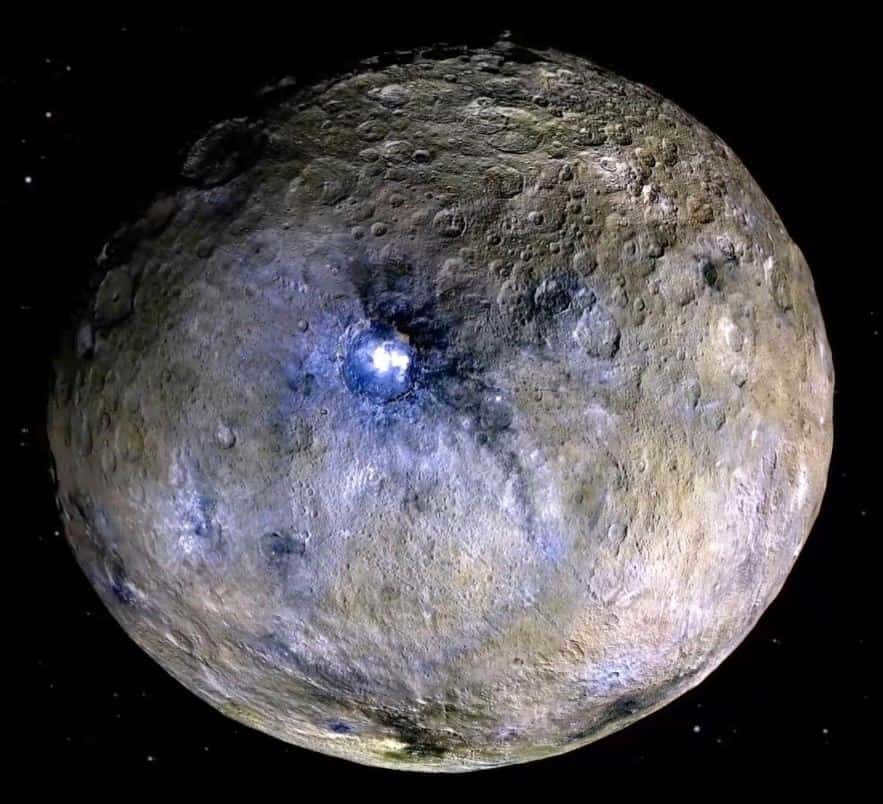

This image in pseudo-color depicts the dwarf planet Ceres, with scientists utilizing false color to investigate disparities in surface materials.
In January 2017, NASA made the selection of two projects, Lucy and Psyche, for the Discovery program. Their anticipated launch is set for October 2021. Lucy will embark on a journey to the asteroid belt, where it will conduct research on 6 Trojans. Psyche, on the other hand, will travel to 16 Psyche, a colossal metallic asteroid. The significance of this mission lies in the potential for it to be the core of an ancient planet that had its outer layer stripped away as a result of a violent collision.
In 2012, Planetary Resources, Inc. unveiled their plans to send a spacecraft to extract water and materials from asteroids. Subsequently, NASA also expressed their intentions for similar endeavors. This is a crucial factor to consider, given that the asteroid belt harbors a vast wealth of valuable resources amounting to a staggering $100 billion per inhabitant of Earth.
It is imperative for children and students of all ages to comprehend that the current threat of an asteroid or comet impact on Earth is minimal. NASA diligently monitors potentially hazardous celestial objects, possessing comprehensive knowledge of their trajectories, distances, and precise dimensions decades and even centuries in advance. It is highly recommended to thoroughly explore fascinating facts about asteroids, alongside perusing captivating photographs and illustrations, in order to foster a deeper understanding of these celestial bodies.
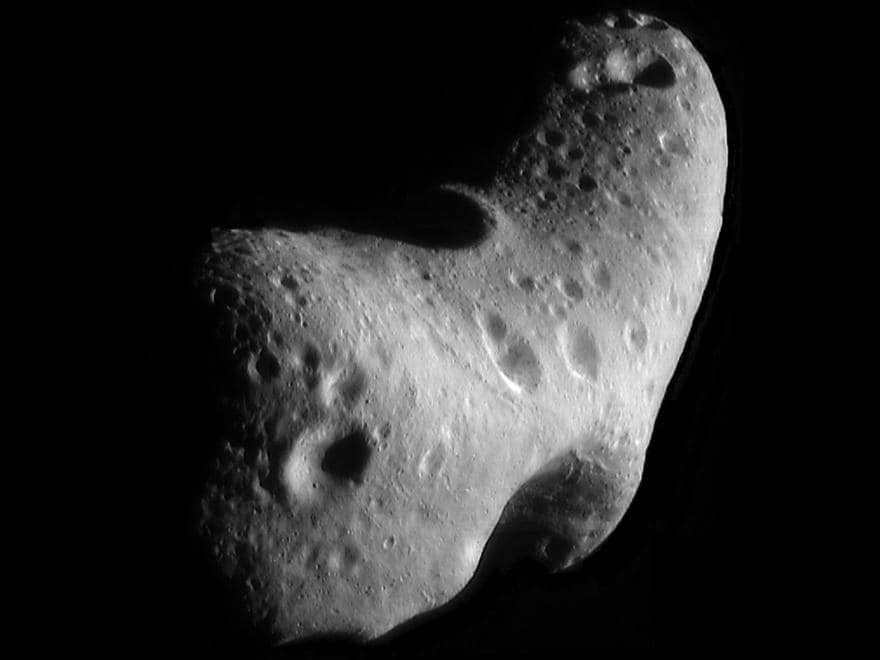

An asteroid is a small celestial object that orbits the Sun. It can be characterized and studied through photographs, and is classified based on various factors. Asteroids can be found in the main asteroid belt, as well as in other locations such as the Trojans and near-Earth objects.
Did You Know? Interesting Facts About Asteroids
- It’s not just asteroids that fall to Earth. Every day, over 100 tons of material from asteroids and comets rain down on our planet. Most of it gets destroyed in the atmosphere due to friction. The surviving fragments are known as meteorites.
- Asteroid impacts were much more common in the past compared to today.
- A massive rockfall 65 million years ago resulted in the extinction of the dinosaurs, profoundly shaping the course of life on Earth.
- Every 2,000 years, a rock the size of a soccer field crashes into Earth.
- Once a year, a rock the size of a car makes its way to us, creating a spectacular fireball. However, most of these objects burn up before reaching the surface.
- Asteroids are not only rich in water, but they also contain valuable and useful metals.
- Some asteroids function as fragmented comets. As a result of their proximity to the Sun, the ice melts and only a rocky core remains;
- Some asteroids possess satellites;
- Asteroids are also referred to as minor planets and planetoids;
Occasionally Asteroids Occasionally asteroids are referred to as minor planets. They are rocky remnants from the early solar system, formed 4.6 billion years ago. The majority of the debris is located between Mars and Jupiter. Asteroids can vary in size, from massive ones like Vesta with a length of 530 km, to small ones less than 10 m in size. The combined mass of all asteroids in the solar system is less than that of the Moon.
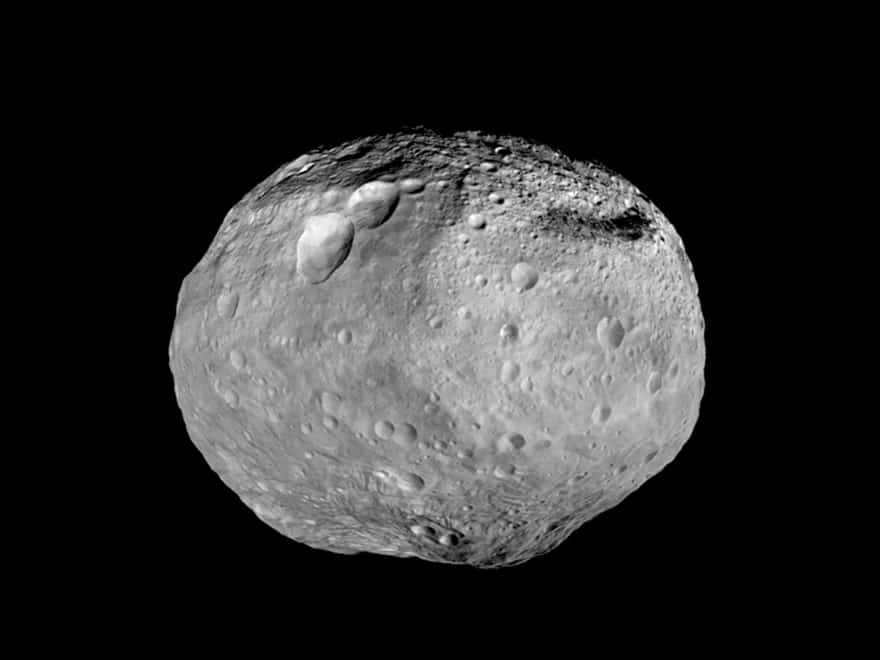

A compilation of the finest perspectives of Vesta, the largest asteroid
The majority of asteroids possess irregular shapes, although a few have managed to achieve nearly spherical forms with the presence of crater formations. As they rotate in elliptical orbits, asteroids also undergo chaotic falls. Roughly 150 objects have accompanying satellites (with some even having two). Double asteroids exist, where two rocky bodies of comparable size converge and orbit around a shared center of mass.
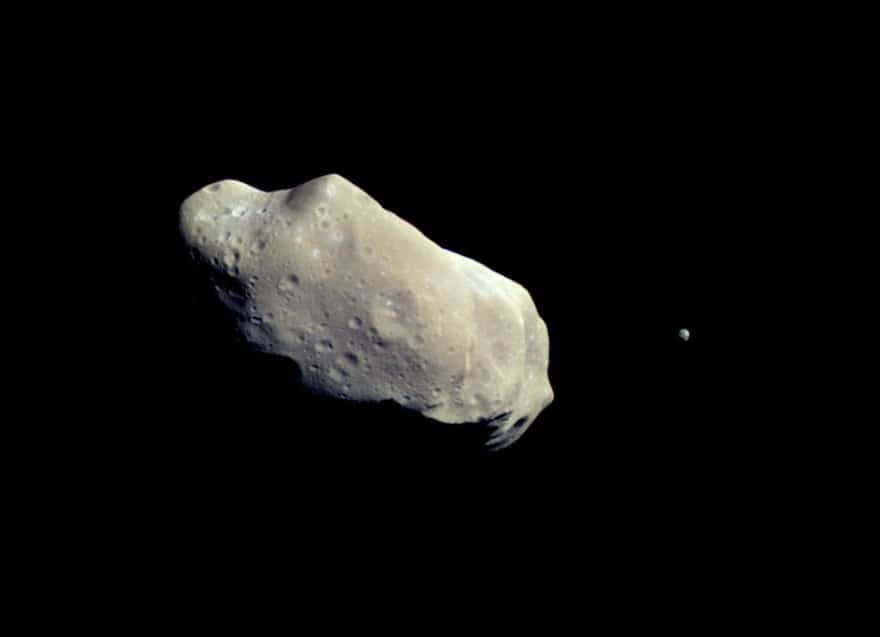
The Galileo spacecraft has discovered that asteroids have the ability to possess natural satellites.
There are three main classifications of asteroids: C, S, and M. The C-type asteroids, also known as chondrites, are the most common and are composed of clay and silicates, giving them a dark appearance. These asteroids are among the oldest objects in our solar system. The S-type asteroids, made up of silicates and nickel-iron, have a stony composition. The M-type asteroids are primarily metallic. The variations in composition are determined by the distance from the Sun at the time of their formation. Some asteroids experienced thermal heating and underwent partial melting.
The strong gravitational force of Jupiter and collisions with other asteroids result in alterations of their paths, leading to their displacement from their original location to other planets. Throughout history, numerous significant objects have collided with Earth, contributing to the introduction of fresh elements into its composition.

Scientists are constantly monitoring for asteroids that are approaching our planet or crossing its orbital path. The minimum critical distance is 45 million kilometers. Radar is a valuable tool that allows them to reflect signals from objects and gather important data such as their orbit, size, shape, and metal concentration.
Several missions have been specifically launched to study asteroids. In 1991, Galileo was sent to explore Gaspra and Ida. Matilda and Eros were later visited by the NEAR-Shoemaker mission. In 2008, Rosetta visited Stein, followed by a visit to Lutetia in 2010. Close flybys were conducted by Deep Space 1 and Stardust.

Comparison of the masses of asteroids
The asteroid Itokawa was landed on by the Hayabusa spacecraft in 2005 with the goal of collecting samples. These samples were then returned to Earth in 2010. Furthermore, the Dawn mission was launched in 2007 and in 2012, the spacecraft set course for Ceres. It finally reached Ceres in 2015.
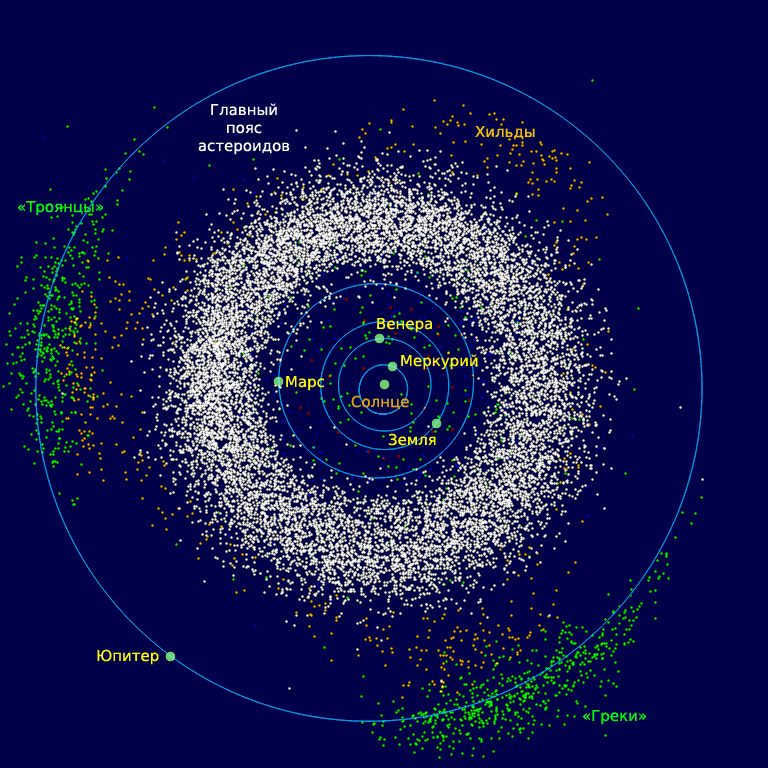
Distribution of asteroids in the solar system
Asteroid categorization
Main asteroid belt: The majority of asteroids are found between Mars and Jupiter, following small orbital paths. This region is home to approximately 1.1-1.9 million objects with a diameter of 1 km, as well as a million smaller ones. During the early stages of the solar system’s formation, the gravitational pull of the gas giant prevented the formation of neighboring planets and led to the collision of small objects, giving rise to the asteroids that we observe today.
Trojans: Trojans are celestial bodies that occupy the same orbit as a larger planet, but instead of colliding with the planet, they gather around two specific points known as Lagrangian points (L4 and L5). The gravitational forces exerted by both the planet and the Sun balance each other out, resulting in the Trojans being propelled out of their original orbits. The majority of Trojans are associated with the planet Jupiter.
Near-Earth: Near-Earth objects refer to celestial bodies that are in close proximity to our planet. In fact, they cross the orbital path of the Earth itself. As of 2013, there were 10,003 known Near-Earth objects, out of which 861 have a diameter exceeding 1 kilometer, and 1,409 are considered potentially hazardous.
Asteroid Naming
The International Astronomical Union (IAU) has a less stringent policy regarding the naming of asteroids, which allows for the naming of asteroids after famous individuals such as Spock, Frank Zappa, and Columbus. However, the IAU currently prohibits the use of animal names for asteroids. Additionally, numerical values are assigned to asteroids for identification purposes.
Asteroids in the Solar System
Astronomer Vladimir Busarev has conducted extensive research on the composition, taxonomic classification, and potential sources of terrestrial life within asteroids.
Different Kinds of Asteroids
Asteroids are small celestial objects that orbit the Sun. They are significantly smaller and less massive than planets, and they have an irregular shape and lack an atmosphere.
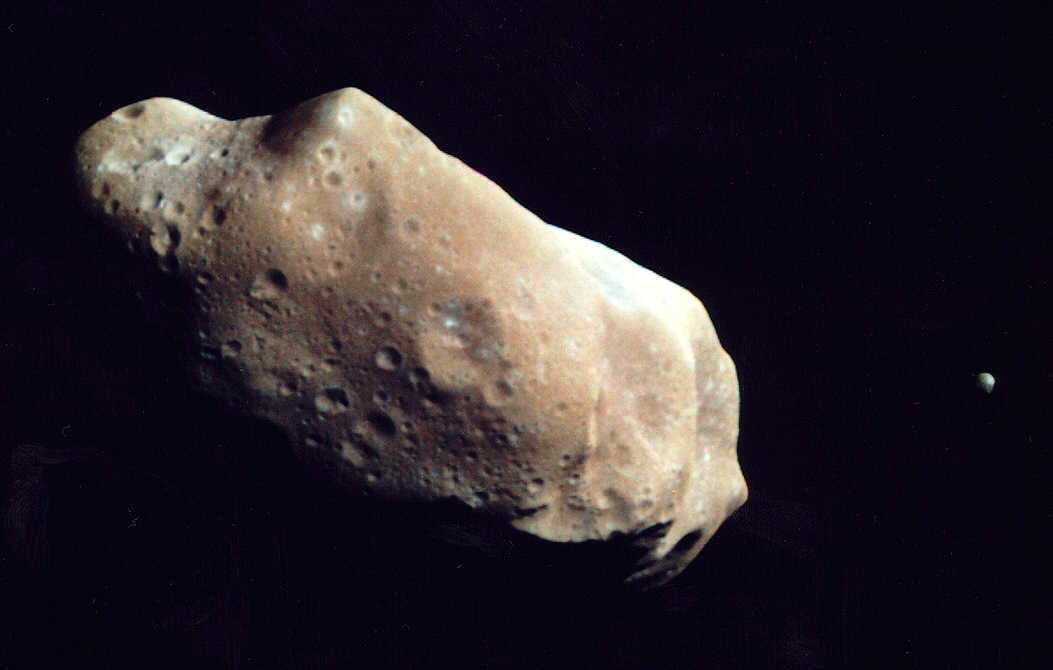
On this page of Kvant.Space, you can discover a wealth of fascinating information about asteroids. You may already be acquainted with certain aspects, while others may be entirely new to you. Asteroids form a captivating portion of the Cosmos, and we encourage you to explore them to the fullest.
The term “asteroid” was initially coined by the renowned composer Charles Burney and later adopted by William Herschel. This name was chosen due to the resemblance of these celestial objects to star points when observed through a telescope, in contrast to the disk-like appearance of planets.
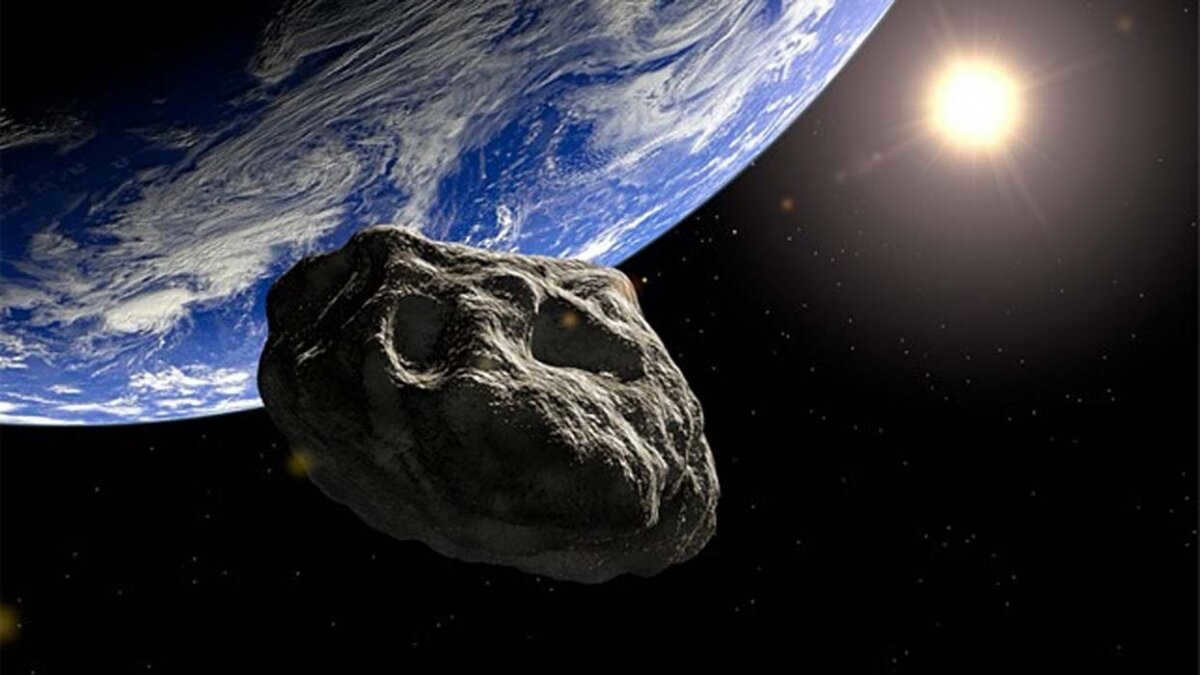
The exact meaning of the word “asteroid” is still not clearly defined. Prior to 2006, asteroids were often referred to as miniature planets.
The primary factor used to categorize them is the size of the object. Asteroids encompass bodies with a diameter larger than 30 meters, while objects with smaller dimensions are known as meteorites.
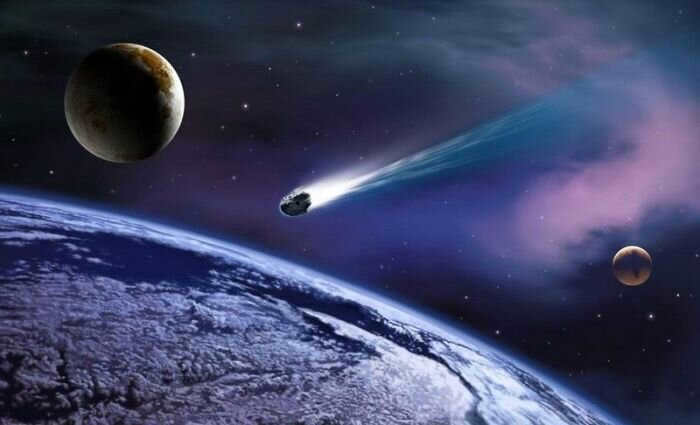
In 2006, the International Astronomical Union categorized the majority of asteroids as small celestial bodies within our solar system.
As of now, scientists have identified hundreds of thousands of asteroids within the Solar System. As of January 11, 2015, the database records 670474 objects, out of which 422636 have established orbits and official designations. More than 19 thousand of these asteroids have been officially named. According to experts, there may be between 1.1 to 1.9 million objects larger than 1 kilometer within the solar system. The majority of the currently known asteroids are located within the asteroid belt, situated between the orbits of Jupiter and Mars.
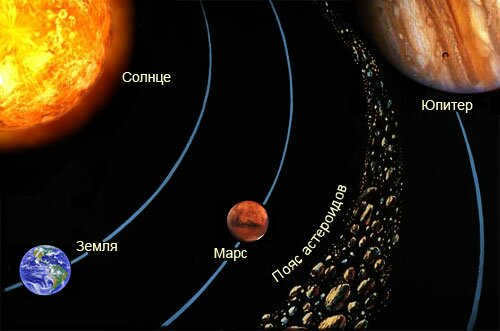
Ceres, which has a size of approximately 975×909 km, holds the distinction of being the largest asteroid in the solar system. However, it has been reclassified as a dwarf planet since August 24, 2006. The two other significant asteroids, Vesta and Pallada, have diameters of about 500 km. It is worth mentioning that Vesta is the sole object in the asteroid belt that is visible to the naked eye. As for the asteroids that follow different orbits, their presence can be detected when they pass by our planet at close proximity.
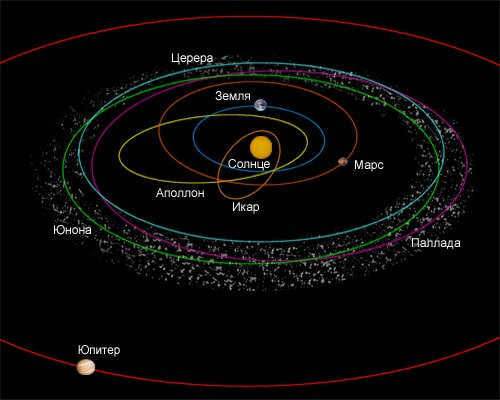
Regarding the cumulative mass of all asteroids in the main belt, scientists estimate it to be around 3.0 – 3.6-1021 kg, which equates to roughly 4% of the weight of the Moon. However, the mass of Ceres alone makes up approximately 32% of the total mass (9.5-1020 kg), and when combined with the other three significant asteroids – (10) Hygeia, (2) Pallada, (4) Vesta – these four account for 51% of the total mass. In other words, the majority of asteroids possess insignificant mass in comparison to astronomical standards.
The exploration of asteroids
Following William Herschel’s groundbreaking discovery of the planet Uranus in 1781, a new era of asteroid exploration commenced. The Titius-Bode rule provides valuable insight into the average heliocentric distance of these celestial objects.
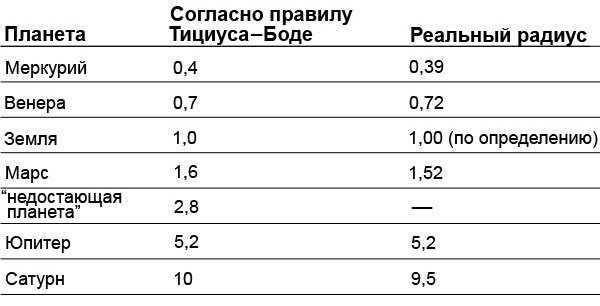
In the late 18th century, Franz Xaver assembled a team of twenty-four astronomers. Starting in 1789, this team focused on searching for a planet that, according to the Titius-Bode rule, should be located approximately 2.8 astronomical units (a.u.) from the Sun, between the orbits of Jupiter and Mars. The main objective was to record the coordinates of stars in the zodiacal constellations at a specific moment. These coordinates were then compared to observations from subsequent nights, with any objects that had moved significantly being identified. According to their hypothesis, the sought-after planet would have a noticeable displacement of around thirty angular seconds per hour.
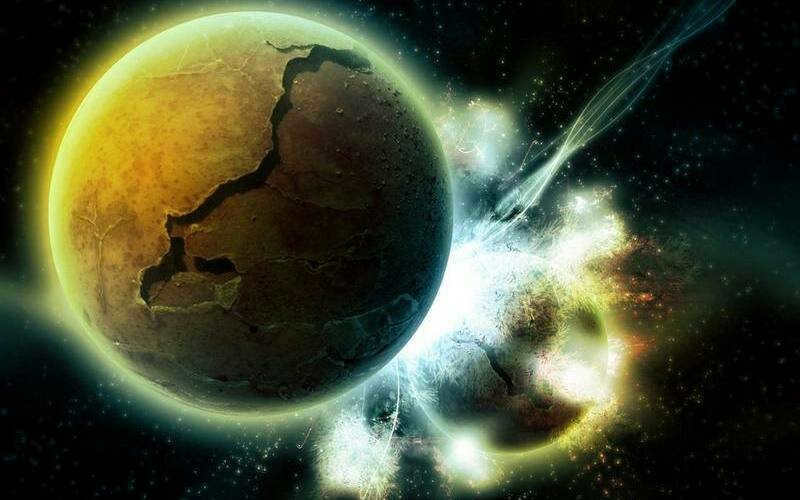
The initial asteroid, Ceres, was accidentally identified on the first night of the century – 1801 by an Italian named Piazia, who had no involvement in this particular project. Over the following years, the next three asteroids – (2) Pallada, (4) Vesta, and (3) Juno – were discovered. The most recent asteroid to be identified was Vesta in 1807. After an additional eight years of fruitless searching, numerous astronomers concluded that there were no more asteroids to be found and abandoned their efforts.
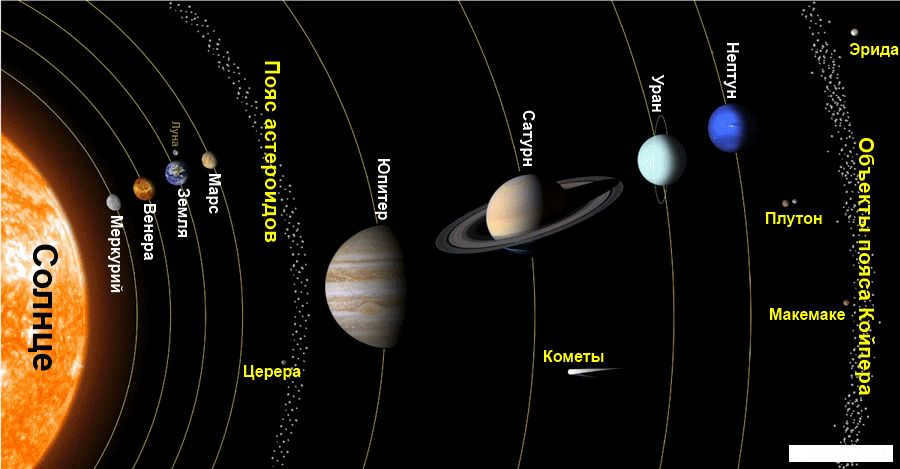
However, Carl Ludwig Henke’s determination paid off, as he resumed his quest for new asteroids in 1830. After a painstaking 15-year search, he finally found Astrea, marking the first discovery of an asteroid in 38 years. Two years later, he made another breakthrough with the discovery of Geba. This success inspired other astronomers to join the effort, resulting in the discovery of at least one new asteroid per year (with the exception of 1945).
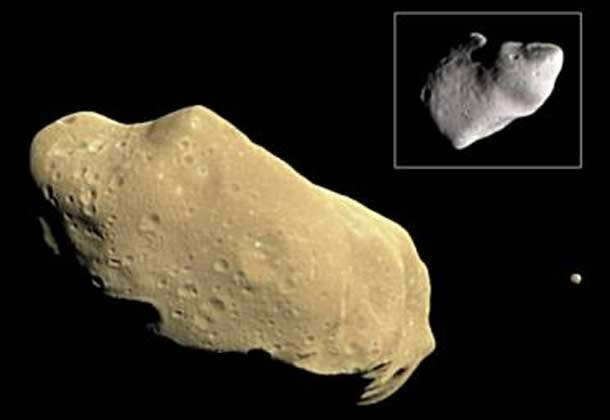
In 1891, Max Wolf introduced the technique of astrophotography to locate asteroids. This innovative method involved capturing long-exposure photos, which revealed short lines of light left by asteroids. Compared to traditional visual observation methods, Wolf’s astrophotography significantly expedited the discovery of new asteroids. Prior to Wolf’s breakthrough, only a few individuals had managed to identify over 300 asteroids. In contrast, Wolf personally identified 248 asteroids. Currently, there are approximately 385,000 asteroids with official designations, and 18,000 of them have been assigned names.
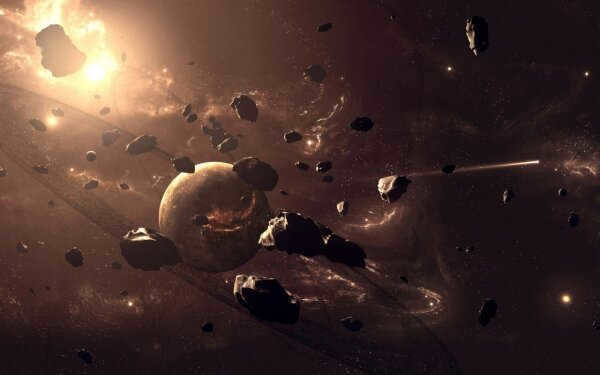
Half a decade ago, a pair of separate research teams comprised of astronomers from Brazil, Spain, and the United States jointly announced their groundbreaking discovery: the existence of water ice on the surface of Themis, one of the largest asteroids. This finding provided valuable insights into the origins of water on our planet. During its early stages, Earth was too hot to retain significant amounts of water. However, this vital substance eventually made its appearance. Scientists have long theorized that water was delivered to Earth by comets, but the isotopic compositions of water in comets and Earth’s water do not match. This suggests that water may have reached our planet through collisions with asteroids. Additionally, scientists have also uncovered complex hydrocarbons, including molecules that serve as building blocks for life, on Themis.
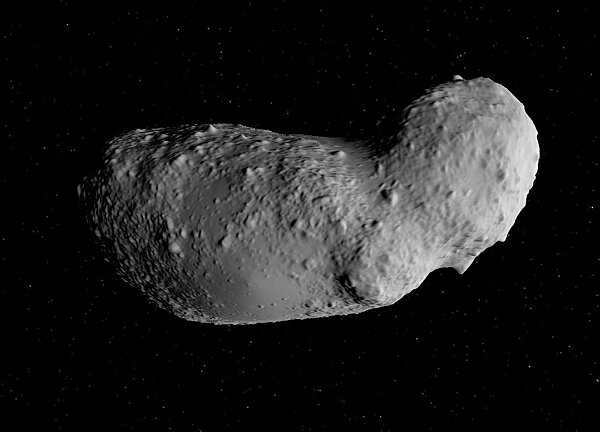
Assigning Names to Asteroids
In the beginning, asteroids were designated with the names of Greek and Roman mythological heroes. Subsequently, discoverers had the freedom to name them as they pleased, including after themselves. Initially, female names were predominantly given to asteroids, with male names reserved for those with unique orbits. However, this practice eventually became less common.
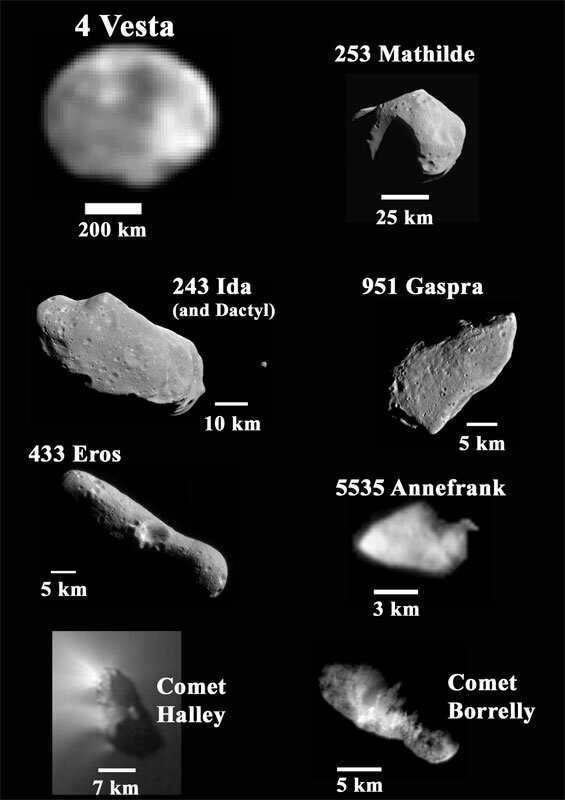
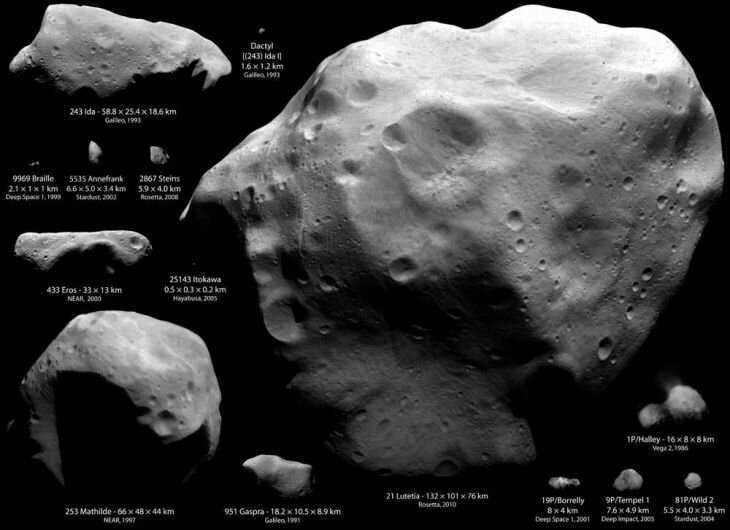
The asteroid is given a name consisting of an ordinal number (number) and a name, such as (8) Flora, (1) Ceres, and so on.
Determining the size and shape of asteroids
In 1805, Johann Schroeter and William Herschel made the first attempts to measure the diameters of asteroids by directly measuring their visible disks with a thread micrometer. Throughout the 19th century, other astronomers used the same method to measure the brightest asteroids. However, this method had a major drawback – there were significant differences in the results. For instance, the maximum and minimum sizes of Ceres obtained by astronomers differed by a factor of 10.
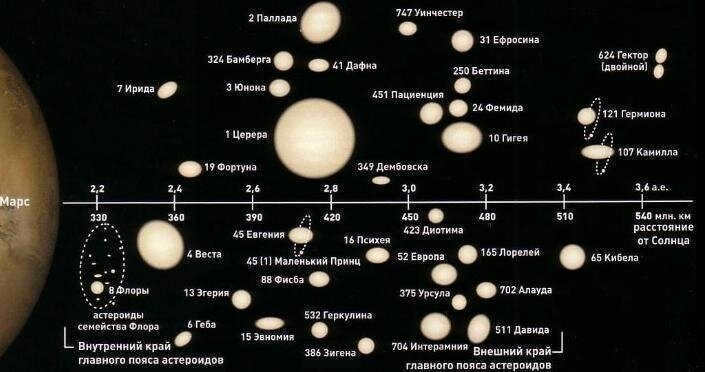
Contemporary techniques for determining the dimensions of asteroids include polarimetry, thermal and transit radiometry, speckle interferometry, and radar methods.
One of the most accurate and straightforward methods is the transit method. As an asteroid moves in relation to Earth, it may pass in front of a distant star. This event is known as “asteroid occultation.” By measuring the duration of the star’s brightness decrease and having information on the distance to the asteroid, its size can be precisely determined. This method enables the accurate calculation of the size of large asteroids like Pallada.
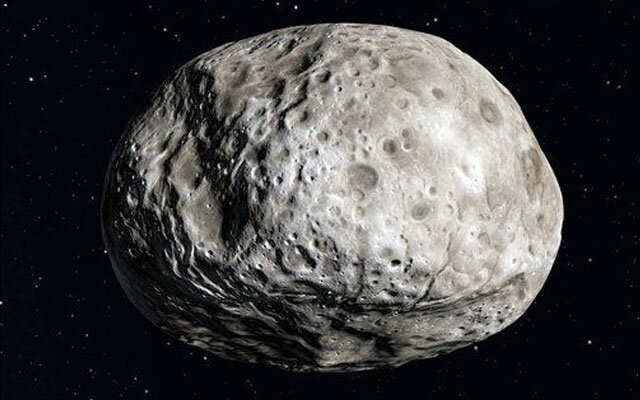
The method of polarimetry itself involves determining the size of an asteroid based on its brightness. The brightness of an asteroid is influenced by its albedo, which is determined by the composition of its surface. The size of the asteroid determines how much sunlight it reflects. For instance, Vesta, with its high albedo, reflects four times more light than Ceres and is regarded as the most visible asteroid, often visible even without the aid of a telescope.

Nonetheless, determining the albedo is a straightforward task. The asteroid’s brightness, or its ability to reflect solar radiation in the visible range, directly correlates with its albedo. The lower the brightness, the higher the absorption of solar radiation and the subsequent emission of heat in the infrared range.

It is possible to utilize infrared telescopes to calculate the shape of an asteroid through recording the variations in its brightness while it rotates. This method can also determine the rotation period of the asteroid and identify its largest surface features. Furthermore, infrared telescopes provide data that is used for thermal radiometry to determine the asteroid’s size.
Asteroids and their categorization
Asteroids are generally classified based on the properties of their orbits and the analysis of the visible spectrum of sunlight reflected from their surfaces.
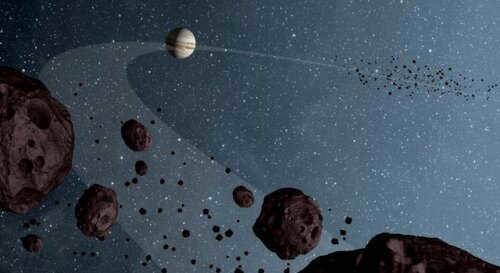
Asteroids are commonly categorized into groups and families depending on the properties of their orbits. Typically, an asteroid group is named after the initial asteroid found in a specific orbit. Groups are generally less tightly knit, whereas families are more compact and were formed in the past as a result of the destruction of larger asteroids due to collisions with other celestial bodies.
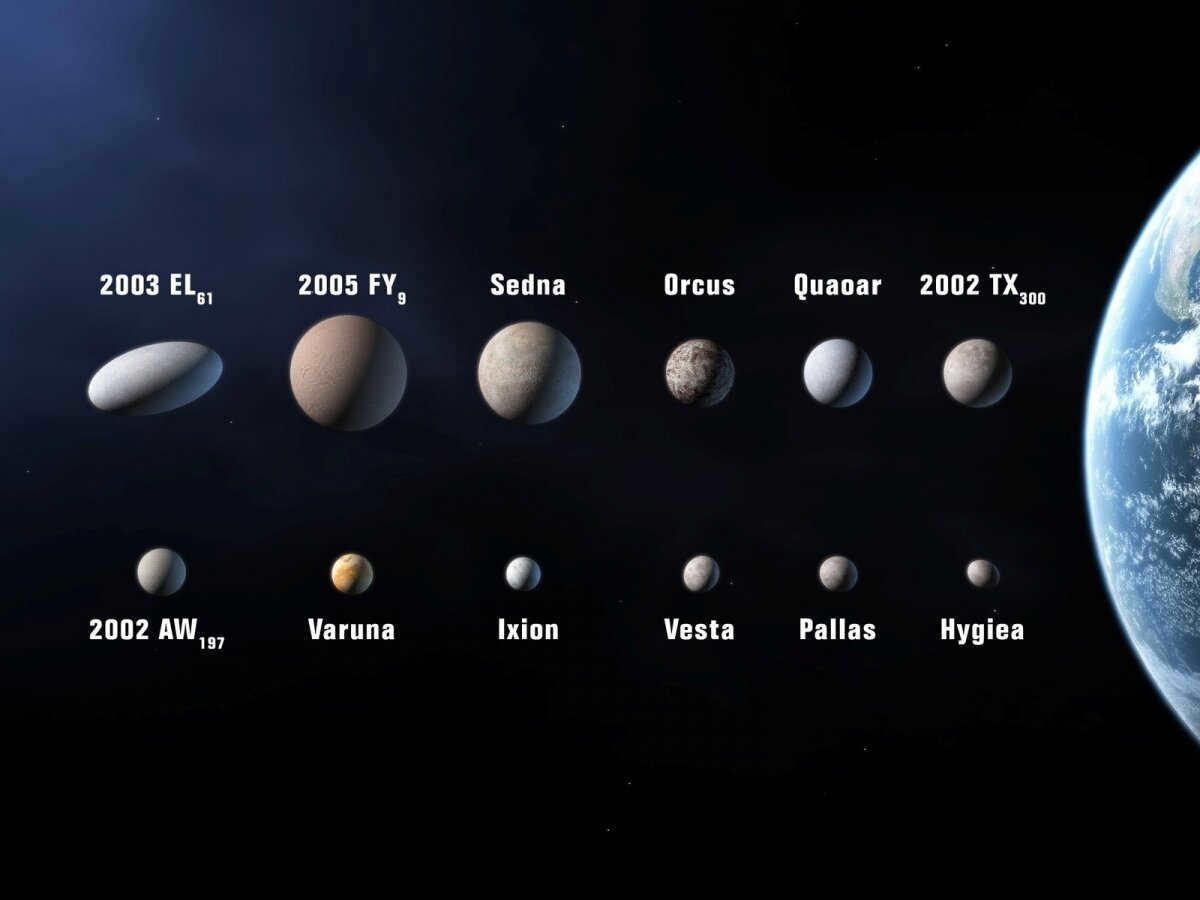
Astronomical Classification
In 1975, astronomers Ben Zellner, David Morrison, and Clark R. Champen developed a comprehensive system for classifying asteroids based on their albedo, color, and spectral characteristics. This classification system initially identified three main types of asteroids:
– Class C – carbonaceous asteroids (which make up the majority of known asteroids).
– Class S – silicate asteroids (approximately 17% of known asteroids).
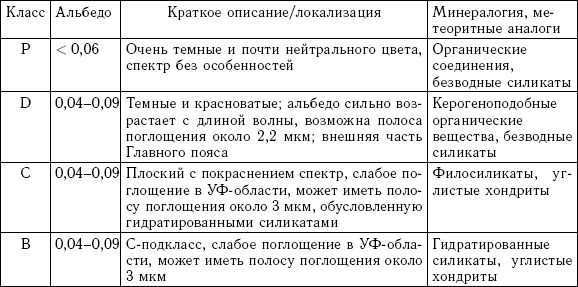
This inventory was expanded as additional asteroids were examined. The subsequent groups emerged:
– Group A – characterized by a high albedo and a reddish hue in the visible part of the electromagnetic spectrum.
– Group B – closely related to Group C asteroids, except they do not absorb wavelengths below 0.5 microns and their spectrum has a slight bluish tint. Generally, the albedo is higher compared to other carbonaceous asteroids.
– Group D – exhibit a low albedo and a flat reddish spectrum.
– Group E – the surface of these asteroids contains enstatite and shares similarities with achondrites.
– Group F – resembling Group B asteroids, but lacking any traces of “water”.
– Group G – possess a low albedo and an almost flat reflectance spectrum in the visible range, indicating strong absorption of ultraviolet radiation.
– Class Q – exhibits a wide and vibrant pyroxene and olivine signature at a wavelength of 1 micron, suggesting the presence of metallic elements.
– Class R – is characterized by a relatively high reflectivity and displays a reddish spectrum at a wavelength of 0.7 µm.
– Class T – displays a reddish spectrum and has a low reflectivity. Its spectrum is similar to that of Class D and P asteroids, but falls in an intermediate position in terms of slope.
– Class V – possesses a moderate brightness and shares similarities with the more general S class, which is primarily composed of silicates, rock, and iron. However, Class V asteroids have a higher pyroxene content.
– Class J represents a group of asteroids that likely formed from the interior of Vesta. While their spectra closely resemble those of Class V asteroids, they are distinguishable by their pronounced absorption lines at a wavelength of 1 micron.

It should be noted that the actual number of asteroids belonging to a specific type may not necessarily align with what is known. Determining the type of many asteroids can be challenging, and the classification of certain asteroids may change as more detailed studies are conducted.
Asteroid Size Distribution
As the size of asteroids increases, their abundance decreases significantly. While this generally follows a logarithmic distribution, there are notable peaks at 5 and 100 kilometers, where there are more asteroids than predicted.
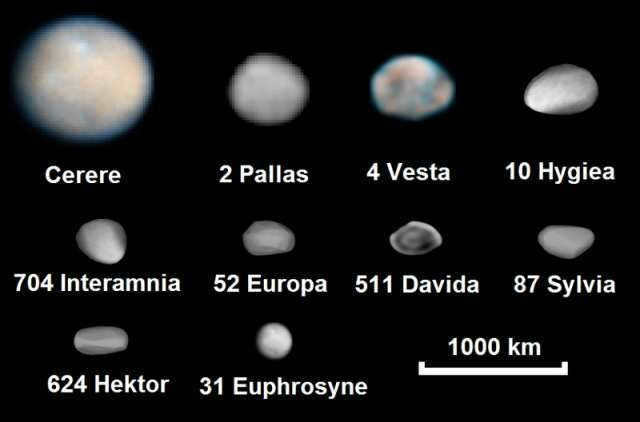

The Formation of Asteroids
Scientists hypothesize that planetesimals in the asteroid belt underwent a similar evolutionary process as those in other parts of the solar nebula. However, once Jupiter reached its current mass, the gravitational interactions between the planet and the planetesimals led to orbital resonances that resulted in the ejection of approximately 99% of the planetesimals from the belt. Computer simulations and observations of spectral properties and rotational velocity distributions suggest that asteroids larger than 120 kilometers in diameter formed through accretion during the early stages of this process. On the other hand, smaller asteroids are believed to be the result of collisions between different asteroids that occurred either during or after the dispersal of the original belt by Jupiter’s gravitational influence. Notably, bodies such as Vesta and Ceres underwent gravitational differentiation, with heavy metals sinking toward their cores and crusts forming from relatively rocky materials. According to the Nice model, many Kuiper belt objects actually originated in the outer asteroid belt, which is located more than 2.6 astronomical units away. Although most of these objects were eventually ejected by Jupiter’s gravity, those that managed to survive may include class D asteroids, such as Ceres.
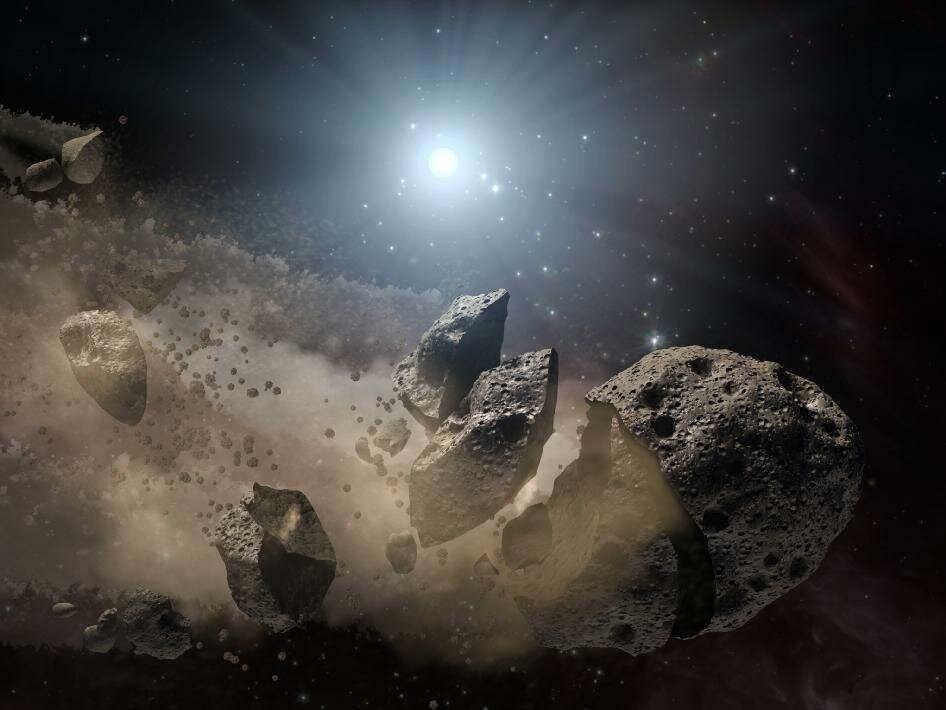
Emerging risks posed by asteroids
While our planet dwarfs most asteroids in size, the impact of a collision with an object larger than 3 kilometers could spell disaster for civilization. Even smaller asteroids, measuring more than 50 meters in diameter, have the potential to inflict massive economic damage and result in numerous casualties.

The danger level of an asteroid increases with its weight and size, but it also becomes easier to detect. Currently, the most hazardous asteroid is Apophis, measuring approximately 300 meters in diameter, capable of obliterating an entire city upon impact. However, scientists assure that, overall, it poses no significant threat to humanity if it were to collide with Earth.

The planet was approached by Asteroid 1998 QE2 on June 1, 2013, marking the closest distance it has come within the last two centuries, at a distance of 5.8 million kilometers.
